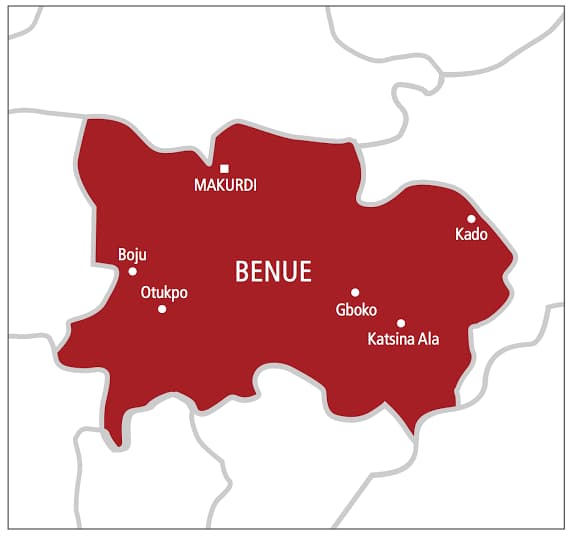The Federal Government has turned to Artificial Intelligence (AI) to revolutionize its Conditional Cash Transfer (CCT) program, targeting the nation’s poorest and most vulnerable citizens. Announced by the Minister of Humanitarian Affairs and Poverty Reduction, Nentawe Goshwe Yilwatda, during an exclusive interview with Arise News on May 31, 2025, this ambitious initiative leverages cutting-edge technology to identify and deliver aid to millions in both rural and urban areas. With Nigeria grappling with a poverty rate that sees 75.5% of its rural population living below the poverty line, according to World Bank data from April 2025, this AI-driven approach marks a bold step toward addressing one of the country’s most pressing challenges.
The CCT program, a cornerstone of Nigeria’s social safety net, has long aimed to provide financial assistance to the nation’s poorest households. However, traditional methods of identifying beneficiaries—often reliant on manual surveys and local government reports—have been plagued by inefficiencies, inaccuracies, and allegations of corruption. AI, which the government is now using to streamline and enhance the process. By analyzing vast datasets, including mobile phone usage patterns, mobile money transactions and potentially satellite imagery, AI algorithms can pinpoint individuals and communities in dire need with unprecedented precision.
According to Minister Yilwatda, collaboration with telecommunications companies has been pivotal. By examining anonymized data such as call frequencies, transaction histories, and even geolocation patterns, the government has successfully expanded its national social register to include 19.7 million individuals, with 6.5 million identified as urban poor. This data-driven approach allows for a more nuanced understanding of poverty, capturing not just income levels but also indicators like access to infrastructure, healthcare, and education. For rural areas, where internet penetration remains low (only 40% of Nigerians are online, with even less connectivity in remote regions), AI tools may also incorporate satellite imagery to assess housing quality, agricultural productivity, or proximity to basic amenities like roads and water sources.
A Rapid Rollout with Tangible Impact
The results of this AI-driven initiative have been swift and significant. Following President Bola Tinubu’s directive six months ago to ensure cash transfers reach only verified accounts, over 5.8 million Nigerians have already benefited from the CCT program. These funds provide critical relief to households struggling with the economic fallout of inflation, currency devaluation, and recent natural disasters, such as the devastating floods in Mokwa, Niger State, which claimed over 150 lives in May 2025. By prioritizing verified beneficiaries, the government aims to eliminate “ghost recipients” and ensure aid reaches those who need it most.
The initiative aligns with Nigeria’s broader National Artificial Intelligence Strategy (NAIS), which emphasizes ethical and inclusive AI applications to tackle socio-economic challenges. The NAIS, launched in 2024, envisions AI as a tool to bridge gaps in healthcare, education, and economic opportunity. The CCT program’s use of AI is a flagship example, showcasing how technology can be harnessed to address systemic issues in a country where over 90 million people live in extreme poverty.
Challenges in Rural Implementation
While the promise of AI is immense, its implementation in Nigeria’s rural areas faces significant hurdles. Rural communities, which make up the majority of Nigeria’s poor, often lack the digital infrastructure necessary for real-time AI applications. With internet access limited to just 40% of the population and even lower in remote regions, collecting reliable data can be challenging. Mobile phone penetration is higher, but usage patterns may not fully capture the realities of rural poverty, where cash-based economies and communal living arrangements are common.
Moreover, the use of satellite imagery, while innovative, requires careful calibration to avoid misinterpretation. For example, a community with thatched roofs might be flagged as poor, but cultural preferences or environmental factors could skew such assumptions. To address these challenges, the government is reportedly combining AI insights with on-the-ground verification to ensure accuracy. Local leaders and community organizations are being engaged to provide context and validate AI-generated findings, a critical step to avoid alienating the very populations the program aims to serve.
Ethical and Privacy Concerns
The use of AI in poverty alleviation is not without controversy. Privacy advocates have raised concerns about the collection and analysis of personal data, particularly from mobile networks. In a country where data protection laws are still evolving, ensuring that sensitive information is anonymized and secure is paramount. The government has pledged to adhere to ethical AI principles outlined in the NAIS, which include transparency, accountability, and inclusivity. However, questions remain about how consent is obtained from rural populations who may be unaware their data is being used.
Another concern is the potential for algorithmic bias. If AI models are trained on incomplete or urban-centric datasets, they risk overlooking rural communities or misclassifying their needs. For instance, a village with limited mobile phone activity might be deemed less poor than it actually is, leading to exclusion from aid. To mitigate this, experts urge the government to involve data scientists and local stakeholders in refining algorithms and ensuring they reflect Nigeria’s diverse socio-economic landscape.
Join our Whatsapp channel to stay updated always!



im9cvf